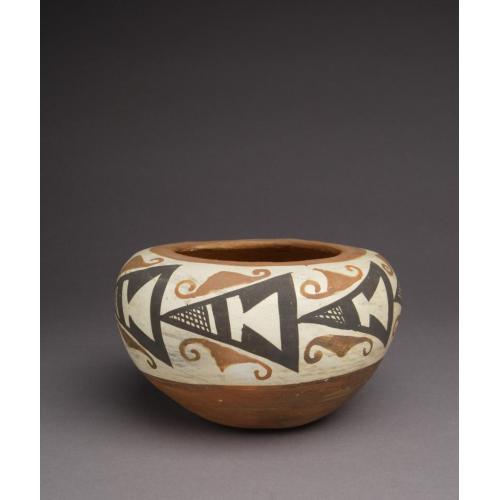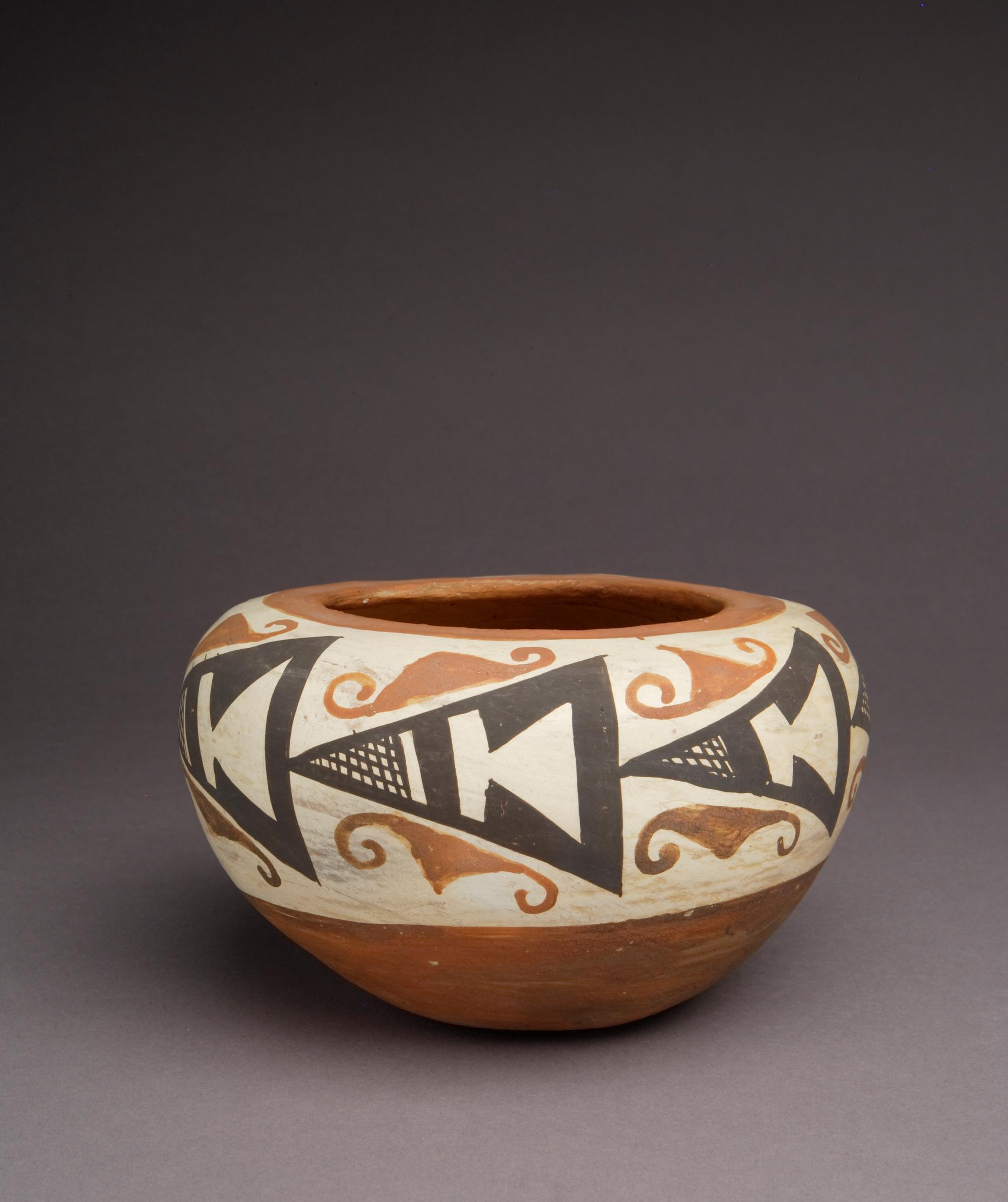
Photograph by Addison Doty. Copyright 2010 School for Advanced Research.
Jar
Date: 1920s-1930s
Artist or Maker: Unknown
Dimensions:
Dimensions: 11.5 × 19.1 cm (4 1/2 × 7 1/2 in.)
Weight: 0.6 kg (1.4 lb.)
Medium: clay | paints
Credit Line: Transferred from the Pottery Exchange, 1930.
Place Made:
McKinley County, New Mexico, Southwest, United States, North America
Object Number: IAF.1828
Not on view
Tribal Collection Review RemarksJim Enote and Octavius Seowtewa during collection review visit December 7 and 8, 2010 (Events Record “Collection Review: Zuni Tribe, Review 5”): Though this jar is identified in the current catalog description as a “seed jar,” its mouth is too wide to be a seed jar. The object name should be changed to just “jar.” The rim is painted red and the red paint also splashed or dripped into the interior. The shoulder and body have bird tail designs with cross-hatching. There are red feather designs above and below the tail designs. The base is painted red and shows very little wear. There are no border lines painted between the different design fields (between the rim and neck, the neck and body, or the body and base). A previous researcher (Dillingham) thought this piece might be from Acoma. Mr. Enote and Mr. Seowtewa explained that the red bird head/tail and feather design appears often on Zuni pottery, but it is not possible to confirm that this piece is definitively Zuni or definitively Acoma.
According to the participants in the Acoma collection review visit June 26-27, 2017 (Events Record “Collection Review: Acoma Pueblo Review 9”): The interior of this bowl is un-slipped showing the red color of the clay used to make this piece. There is a red clay source at Acoma but typically that clay is used to make bean pots. These slip colors can all also be found at Acoma as well. The participants could not agree if this bowl’s characteristics are more Acoma or Zuni and agreed it should be left as Acoma or Zuni.
In Collection(s)
The Indian Arts Research Center, in collaboration with Native American community scholars, strives to present accurate collections records. Records may be updated as new information becomes available and is reviewed with the Native American community having cultural affinity to particular items. Please write to iarc@sarsf.org if you have questions or concerns related to the documentation.
